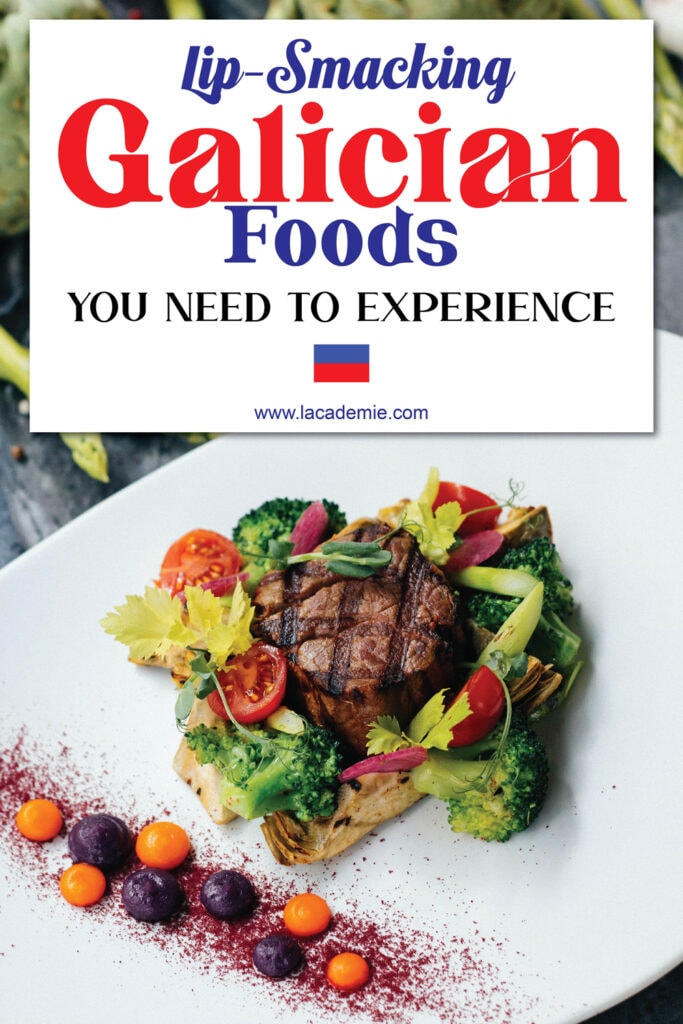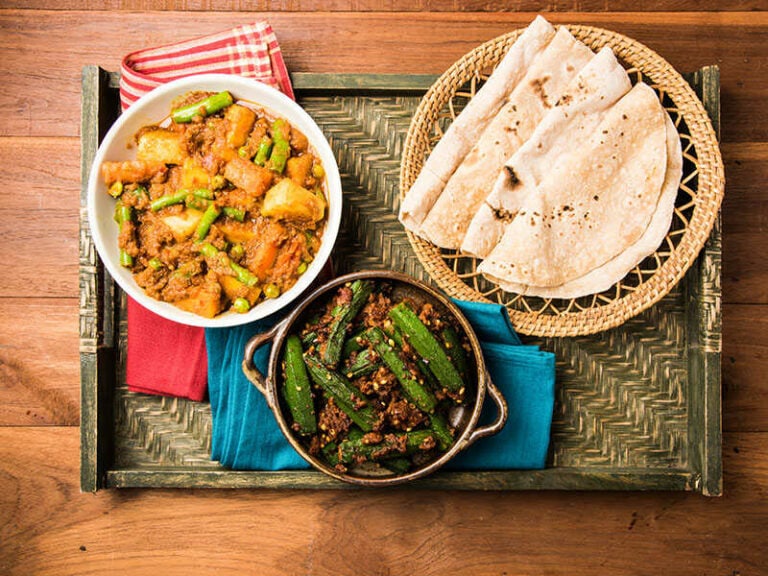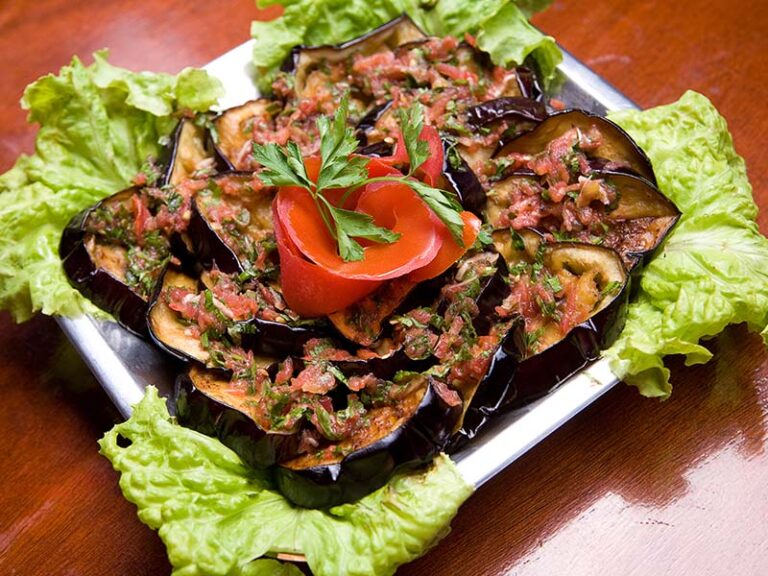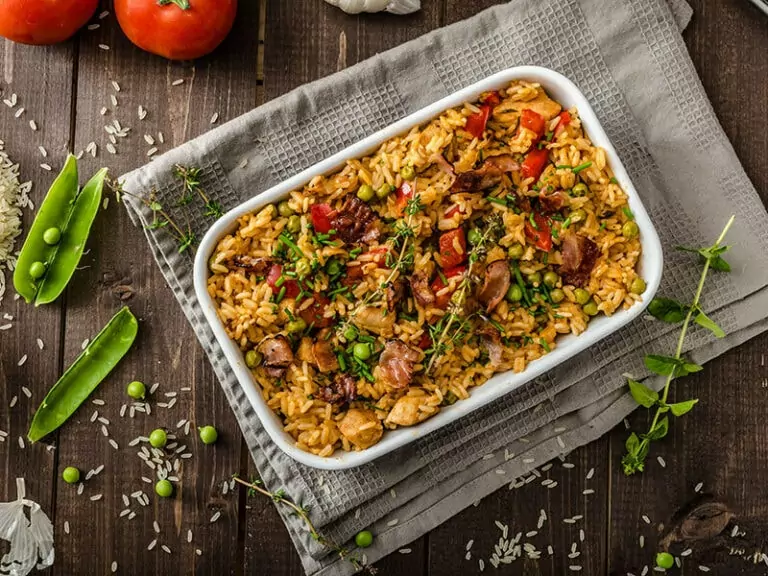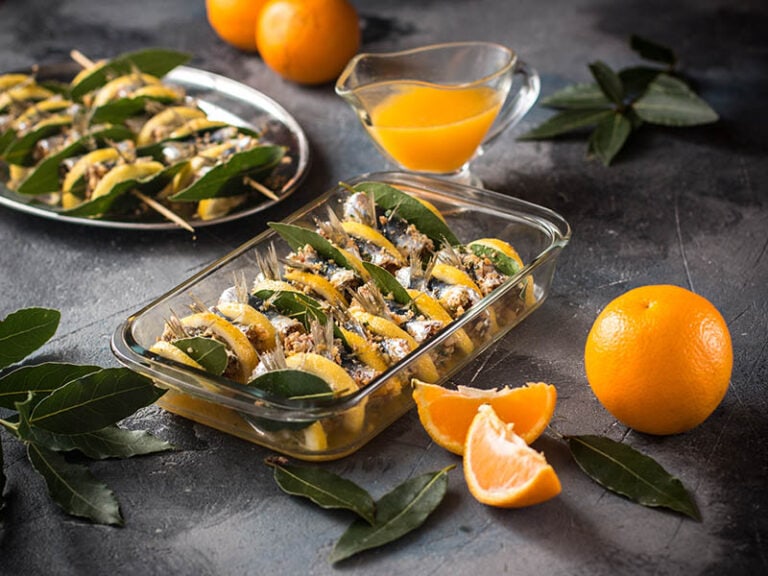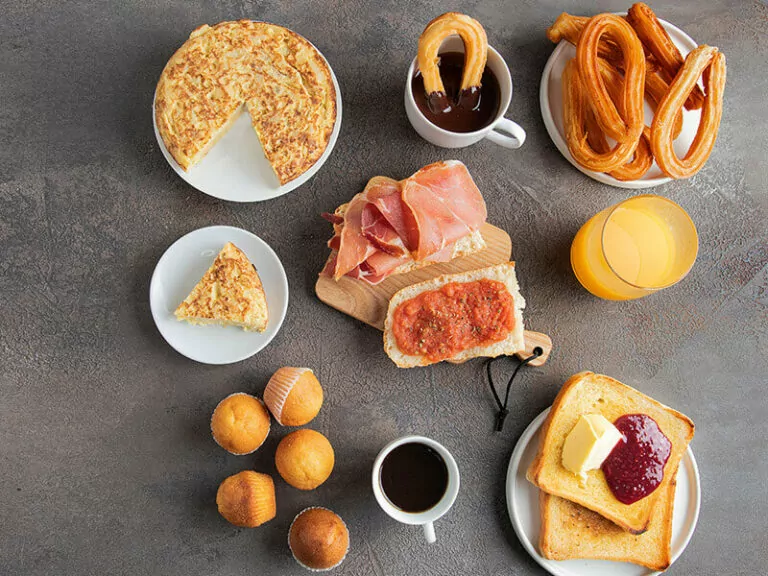Don’t travel to Spain and skip Galician foods! To the northwest of the country, you’ll find endless delicious sauces and seafood in Galicia. This area is not only a staple in Spain cuisine but also the world in general.
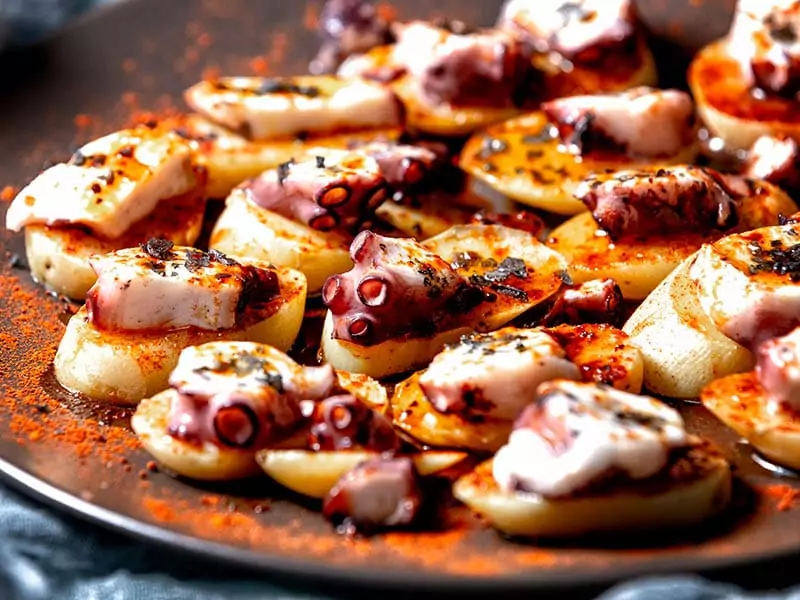
There are six culinary regions in Spain with separate cultures and tastes, and Galicia is the representative for seafood. Still, that’s not the only note, and you might be surprised to know some famous dishes that stem from Galicia! Keep reading to learn the unexpected!
1. Empanada – Meat Pie
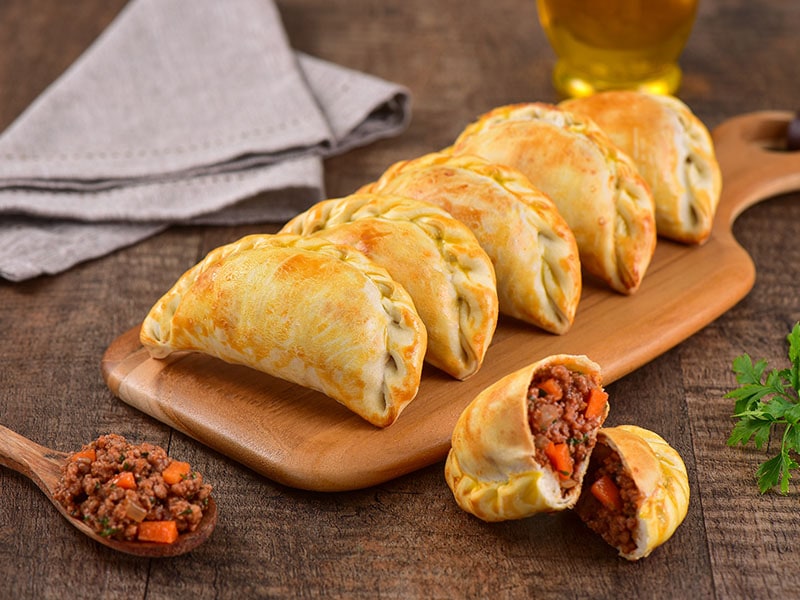
Empanada is a famous patty in South America after the Spanish colonization. The origin of this delicious treat remains unknown, but most people believe that it first appeared in Galicia. Its name derives from “Empanar” in Spanish, which means breaded or covered in bread.
Basically, Empanadas consist of chopped or minced meat, regional spices, and perhaps boiled eggs. The locals will cover that combination in a flat dough, shape it into a crescent, then bake or fry it until perfectly golden brown.
In the old days, Empanadas used to be a favorite Galician breakfast dish for the working class due to their convenience and nutrition.
You can find many variations of Empanada from region to region, but the most famous version in Spain is Empanada Gallego – I’ll cover this further down.
2. Lacón Con Grelos – Pork with Turnips
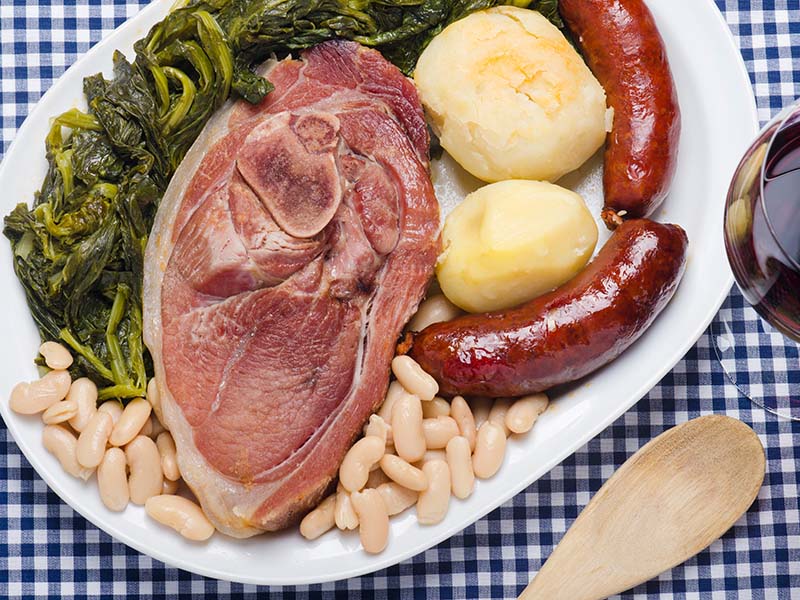
Lacon con Grelos is among the most popular meat dishes in Galicia. It’s highly associated with both the cold months and the Carnival festival – when the turnips are at the best stage to crop.
The locals make this traditional dish with slices of pork shoulder or ham hock and turnip buds or greens, not the root parts. When serving, you can expect to enjoy this dish alongside some boiled potatoes, Chorizo sausage, and other optional vegetables.
3. Chuletón De Ternera – Rib Eye Steak
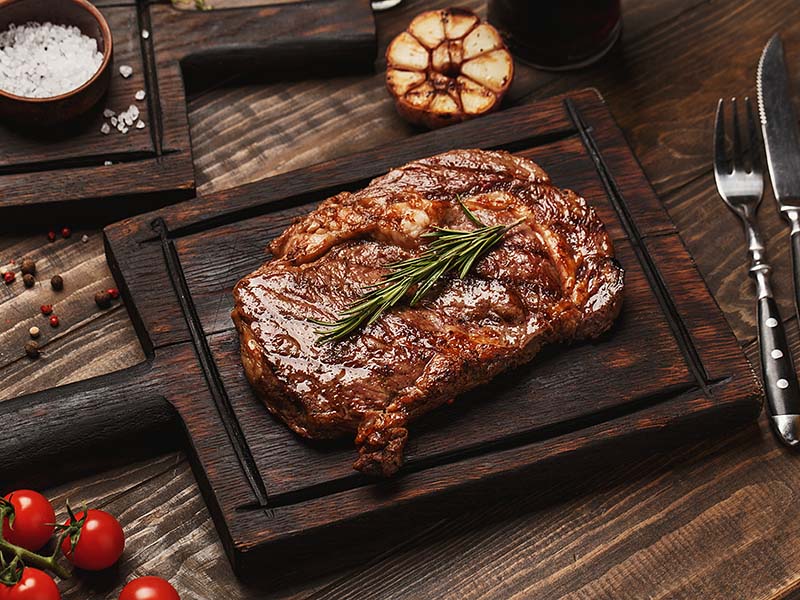
Beef steaks are highly affordable in Galicia, but you can put your expectations even higher for the quality. This region owns the best breed of cow in Spain, and they call it Rubia Gallega or Galician blond. Order an “A la plancha” or grilled in Galician for the best experience.
You can easily address steak restaurants while traveling in Galicia, and most of them serve Chuleton de Ternera, the ribeye steak with a tender texture and succulent flavor. They usually garnish this dish with some rock salt alongside fried potatoes.
4. Churrasco – Barbecued Spare Rib
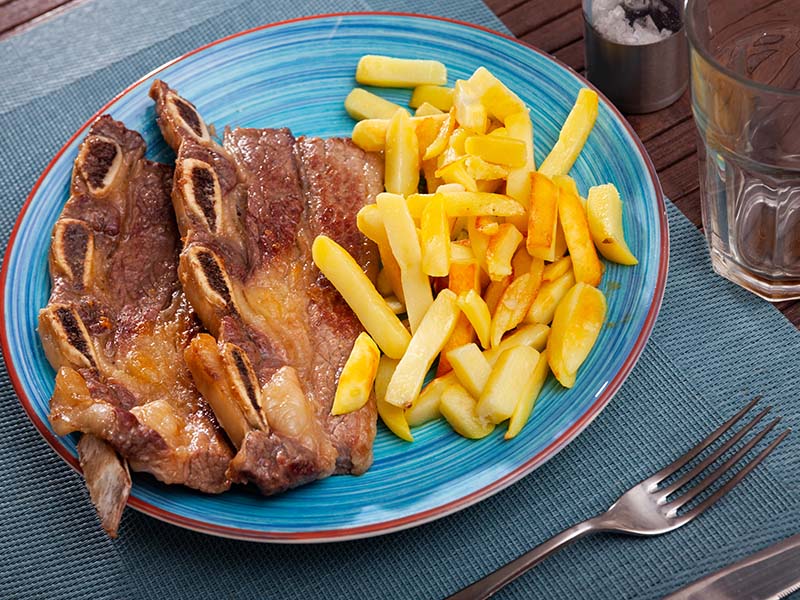
Interestingly, while Churrasco is famous in South America, and the Churrascada festival held annually is in Brazil, some believe that the Galicians have introduced it to those regions.
The reason is the Galician immigrants during the 20th century have brought their homeland recipes with them to America. And many of them still take part in the Churrascada festival nowadays.
Though Churrasco only refers to grilled beef in many nations, the Galicians use this term for grilled meat in general, specifically the spare rib. They also use the term Churrascada to indicate the family or close ones event that basically is the BBQ party in America.
5. Cocido Gallego – Stew with Meat and Vegetables
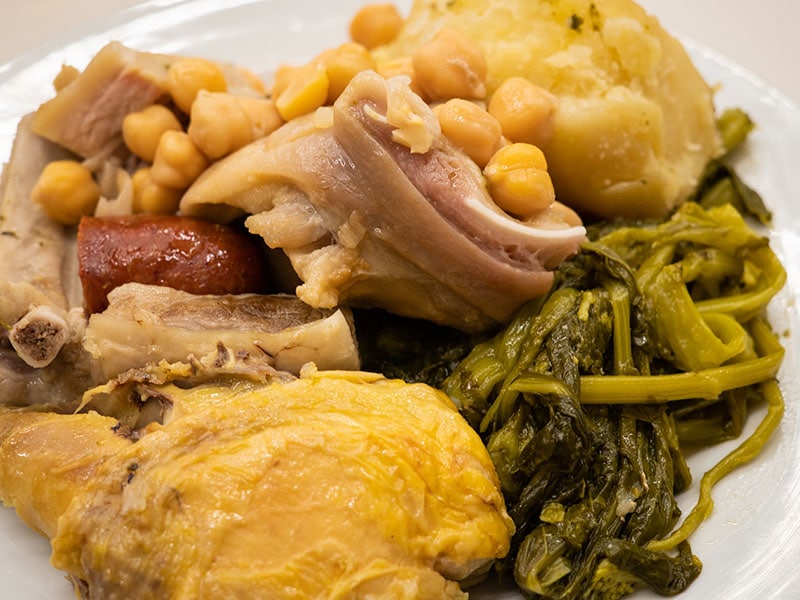
Cocido is a term for stewed delicacies in various Spanish cooking ideas, and it derives from the word “Cocer”, which means to boil. You can also find this name in Portugal and Brazil. (đã dùng
In Spain, there are many variations of this dish that are named after their origin, and Cocido Gallego is among the most famous ones. The Galicians also prepare their stew with turnips greens, pork shoulder meat, Chorizo sausage, and potatoes.
This stew is also among the cultural Galician dinner dishes for the cold months. Beans, mostly chickpeas, is another irreplaceable ingredient for Cocido Gallego. Poultry sometimes also takes part in, and the locals will slowly cook the whole combination on low heat.
6. Botelo – Meat Stuffed In Casing
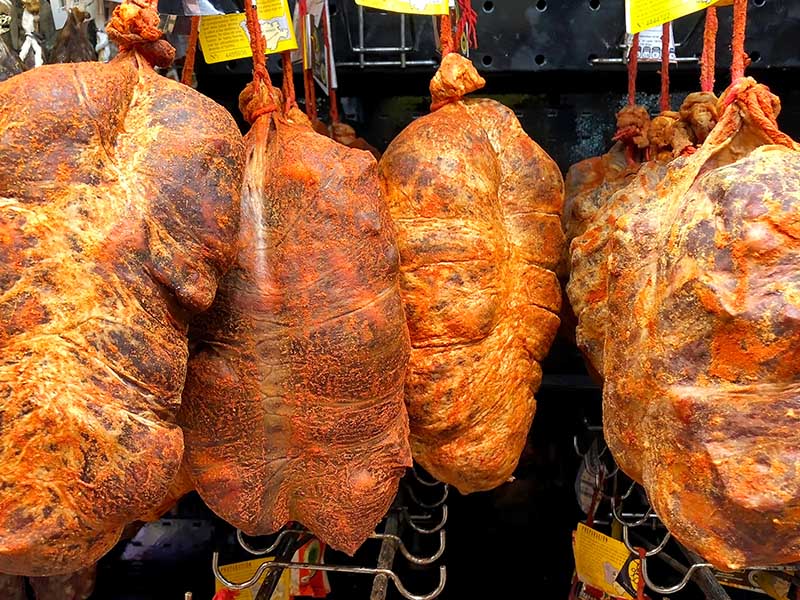
Botelo is a traditional from El Bierzo, a county in Galicia. Thus, some other regions may call it Botillo El Bierzo. It consists of chopped pork meat stuffed in a pig’s cecum. The locals usually use pork tail, rib, and head meat, such as ears, snouts, or jaws, for Botelo.
It’s crucial to season the chopped meat with garlic and paprika before stuffing them. The process of making this culinary specialty takes at least 4 days from the butchering until done. After mixing the meat with spices, the Galicians will smoke it with oak wood.
Then they’ll allow it to sit in the drying room for at least 2 more days to ensure its consistency. When serving, the locals will re-cook Botelo after covering it in a sheet. This dish has a distinct flavor from pig along with the interesting smoky, peppery aroma.
7. Androlla – Semi-Dry Sausage

Besides the standard Chorizo sausage, the Galicians also created their kind of sausage – the Androlla. They make it with pork spare ribs or “cueras” – bacon end slabs, and stuff it in natural casings.
The traditional paprika also takes part, as well as garlic, oregano, and white wine, in order to season the meat. Hence, the deliciousness of this sausage doesn’t only come from the spice, but also from the qualified meat itself, the local Celta pigs.
Androlla is usually smoked and cured in a 2-months process before you can re-cook it and consume it. The Galicians also use Androlla with Lacon con Grelos in place of Chorizo.
However, you might want to make sure you’re enjoying the right Androlla since some Galician regions use this term to indicate any pork sausage.
8. Mejillones Al Vapor – Steamed Mussels
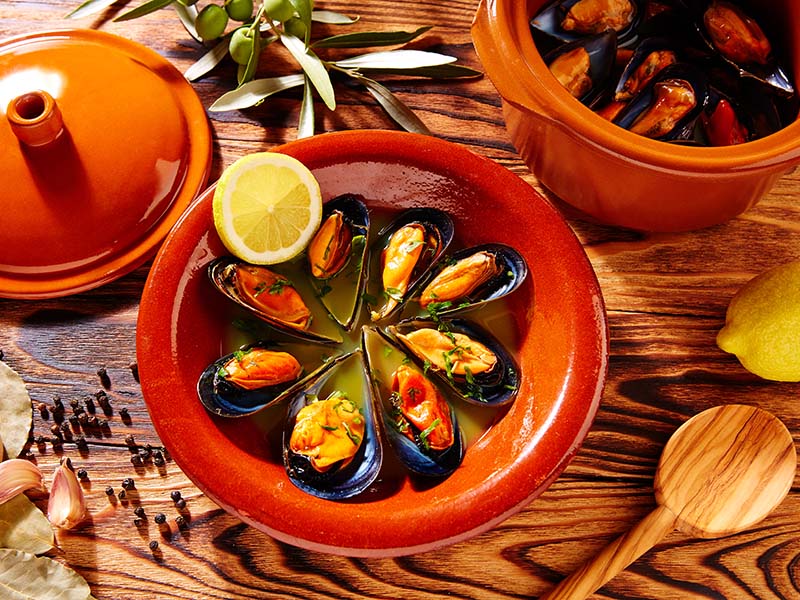
The mussel aquaculture in Galicia is highly abundant, mainly in the regions of A Coruña and Pontevedra. The locals prepare Mejillones al Vapor by steaming those mussels with lemon, white wine, spring onions, and a few bay leaves.
The steaming method itself is straightforward, and you can even create or recreate Mejillones al Vapor at home. However, you might want to come to this region to get the best authentic version since they use the typical Fresh mussels from local coasts.
These mussels are so-called Mytilus Galloprovincialis, and the locals are proud of this nourish and flavorful kind of seafood. Hence, they store it in the most dedicated method to maintain freshness and deliciousness.
The Galicians even register for these mussels a prestigious quality seal to protect their designation of origin (or PDO). If you want to sample this type of mussels, you can identify them by the red and yellow PDO seal with the label “Mejillon de Galicia” on their shells.
9. Mejillones Rellenos – Stuffed Mussels
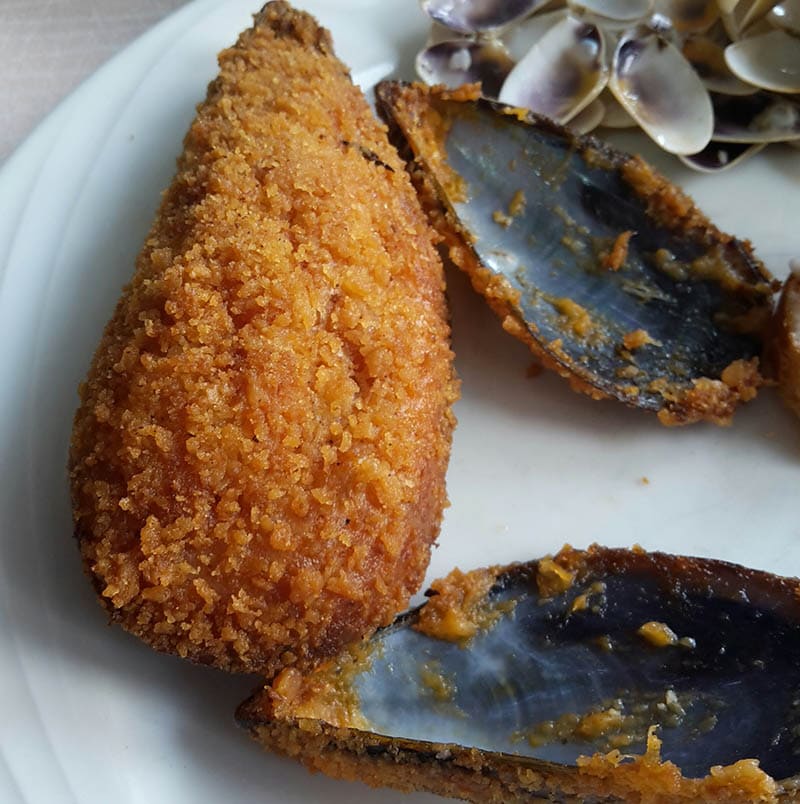
In Spain, “Tapa” means appetizer, and Mejillones Rellenos is one of the most famous Tapas. This dish sprouts from the Bilbao city of Basque, and other regions of Spain also call it Tigres or tigers in English, which derives from its fiery flavor.
The Galicians prepare this seafood by covering it in a mixture of wine, onion, and flour. Then, they once again coat it in breadcrumbs before frying. When serving, the cooks usually place the mussels back to their shells, which the customers are free to discard on the floor.
The locals consider that’s the best way to enjoy Mejillones Rellenos, and you can often see empty mussel shells laying on the floor, even in the bars. In addition, this dish is also famous for its accompanying spicy sauce that comes from tomatoes, anchovies, and peppers.
10. Empanada Gallega – Meat Pie
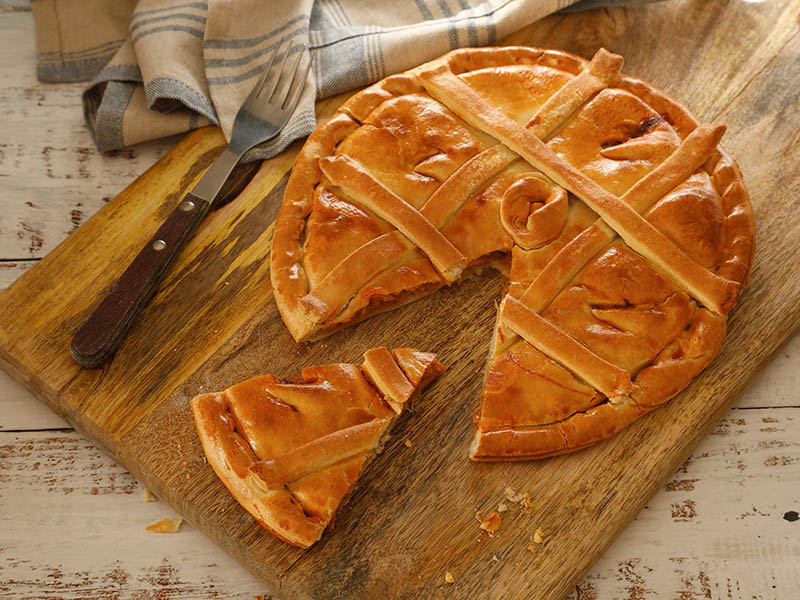
Unlike most Empanadas with portable sizes and crescent shapes, the traditional Galician recipes for this delicacy are in large rounds or squares. Empanada Gallega is a staple for special occasions or celebrations of the locals, and they enjoy it either chilled or fresh baked.
The Galicians prepare it with leavened dough and multiple stuffings before baking it until golden brown. Though paprika and onions are always included, the stuffing variations are endless, from meat bases to vegan. Still, the most popular ones in Galicia are tuna fillings.
11. Merluza A La Gallega – Galician Style Hake
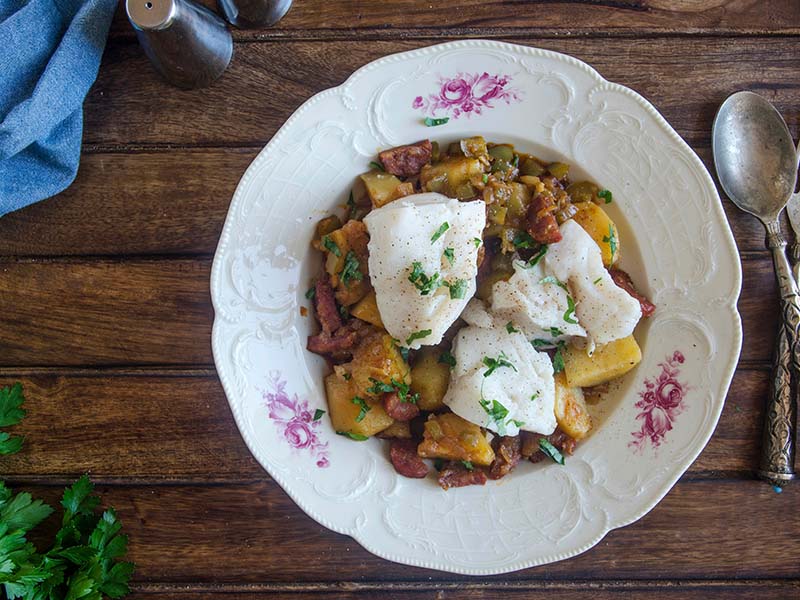
Along with other seafood, hake is extremely common in Galicia, and you can expect a unique taste when sampling this saltwater fish here. The locals will slowly cook hake cuts with bay leaves, onions, and potatoes in salted water.
In another pan, they prepare the signature sauce for this dish that combines sauteed garlic, olive oil, and paprika. Some modern methods may only use one-pan recipes. Still, the traditional way is to pour the sauce onto the fish and reheat it when serving.
12. Pulpo A La Gallega – Octopus Dish
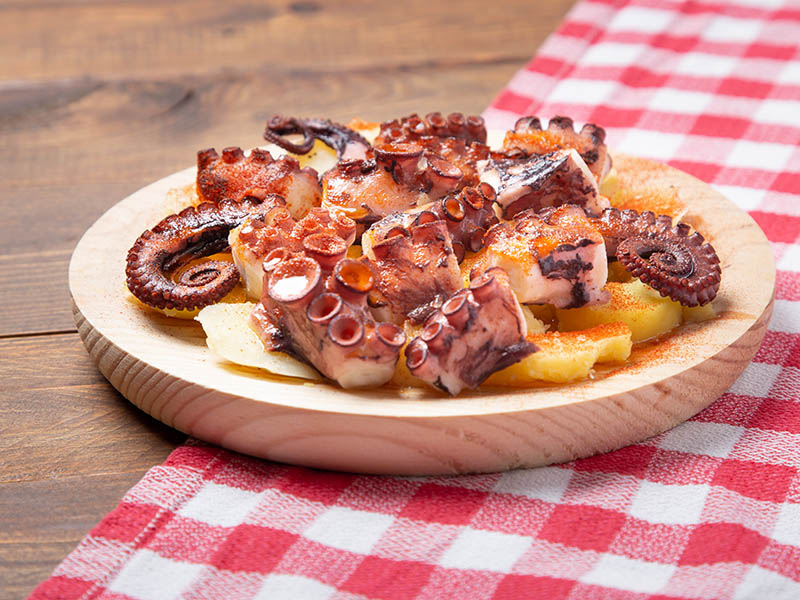
Eating octopus is quite something extraordinary in many nations, or even in other regions of Spain, but in Galicia, it’s a culinary delicacy. Freshly caught octopus cut into bite-sized pieces with tenderness and juice that will satisfy even the most fastidious tongue.
The locals usually cook this dish in a copper cauldron that gives the taste that no other cookware can. They serve octopus cut with thick slices of boiled potatoes, a drizzle of olive oil, paprika, and sprinkle coarse salt for seasoning.
Pulpo a la Gallega usually sits on a wooden plate when serving, and the Sanabria region even adds some garlic. In addition, this dish is also known as Pulpo A Feira since it’s almost always available in Galician fairs and festivals, and the stalls serving it are called Pulpeiras.
13. Caldo Gallego – White Bean Soup
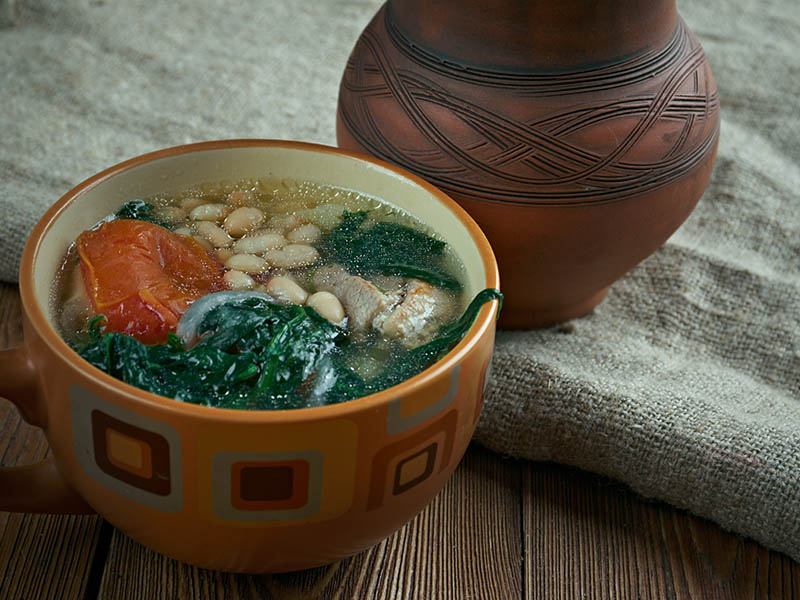
Like Cocido, the Spanish names the Caldo or broth after its origin, and Caldo Gallego is one of the most outstanding. It consists of chickpeas or white beans, turnip greens, broccoli, and potatoes. Hence, you can tell that the broth base itself is vegan.
However, the local cooks may sometimes add meat ingredients such as sausage, lard, ham, or bacon. Therefore, you might want to ask the cooks before ordering Caldo Gallego. The traditional way to serve this delicious, nourishing soup is in an earthen bowl called Cuncas.
It’s also known as a standard course starter for Galician lunch dishes. You can also find a similar broth named Caldo Verde in Portugal, and people believe that deliciousness reaches another level when reheated the next day.
14. Pimientos De Padron – Fried Green Peppers
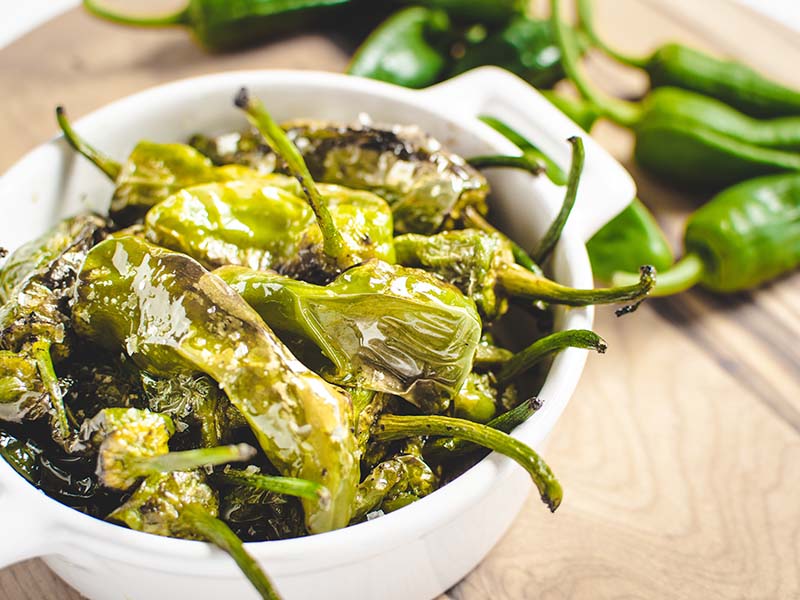
This dish is way more interesting than what you usually expect for vegan food. Pimientos de Padron or Padron peppers often have a mild flavor, and the locals mostly pan-fry them with olive oil with some coarse salt for garnishing.
You can find these peppers in almost any tapa bar or restaurant, and they usually serve them with wine, cider, or a glass of beer. The exciting part is one or two out of ten Padron peppers are incredibly spicy, and you won’t be able to identify those until you eat them.
In Galicia, they got a saying, “Os pimientos de Padrón, uns pican e outros non”, which means “Padron peppers, some are hot, some are not”. They are so proud of this extraordinary pepper that they hold an annual festival to honor it in August.
15. Pan Gallego – Galician Traditional Bread
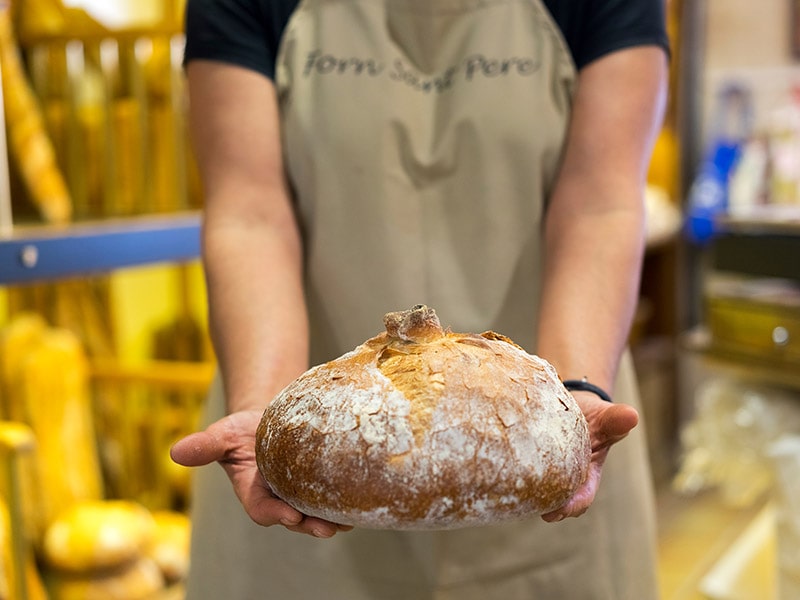
Pan Gallego is a traditional bread that is available in artisan bakeries across the Galician regions. The bakers make this iconic bread type with Galician wheat flour, a sourdough starter, a large amount of water, and a pinch of salt.
The leavening or resting process of this bread takes at least 3 hours. Hence, the outcomes are soft with springy crumbs and many air pockets. The locals prefer to form a hard crust for Pan Gallego, and they shape the bread into 4 different types.
The first is an uneven round with a knot on top called Hogaza. Barra is similar to a baguette. The remaining two are flatbread, the ring shapes are Rosca, and Torta is round. The best way to enjoy Pan Gallego is with slices of Queso Tetilla – keep reading to know about this cheese.
16. Queso Tetilla – Cultural Cheese
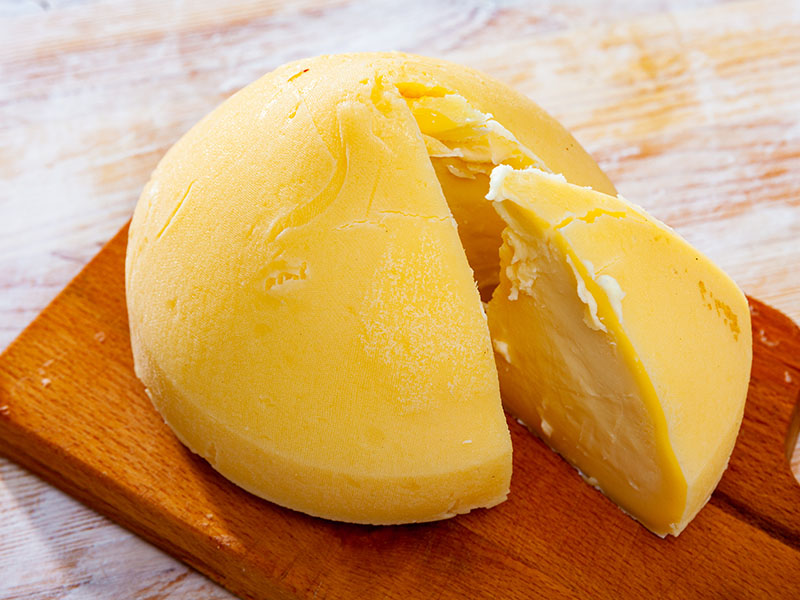
Queso Tetilla is a staple cheese variant in Galician cuisine. The locals either enjoy it with Pan Gallego or as a dessert. The buttery and aromatic flavor of Queso Tetilla comes from the milk of three cow breeds: the Dutch Friesian, the Swiss Brown, and the local Rubia Gallega.
While Queso generically means cheese, Tetilla derives from the breast shape of the cheese block. The artisans usually make this cheese weigh 0.5 to 1.5 kilograms in a pear-like form with a point on top. Thus, the locals also call it “Perilla”, which means nipple.
Many would describe the taste of Queso Tetilla as relative to walnuts and vanilla. You can add it to your cheeseboard and enjoy it with optional wine or combine it with Chorizo sausage, bread, and ham as the Galicians do.
17. Leche Frita – Fried Milk
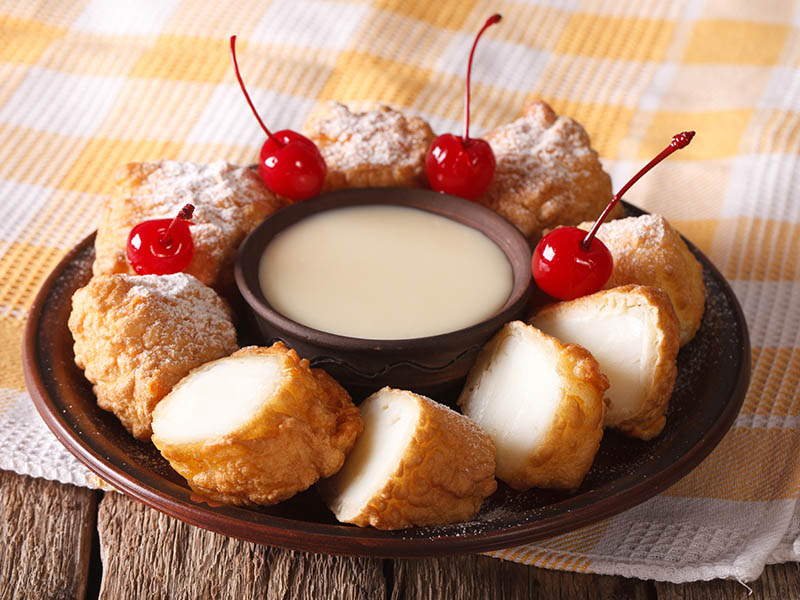
The origin of Leche Frita is quite fuzzy, though some may insist that it’s an invention of the nuns in Palencia in the effort of maintaining their convents. Nowadays, it’s one of the most favorite Galician desserts that you can sample throughout Spain.
To prepare Leche Frita, the cooks will first combine corn starch, flour, sugar, egg, and milk. After cooking the combination into a firm dough, they will cut it into bite-sized pieces and deep-fry them. They will add a coating of sugar glaze and cinnamon powder when serving.
You can either enjoy these sweets hot, chilled, or cold. But ideally, the Galicians will have it alongside a scoop of ice cream. Although it’s available primarily in pastry shops and restaurants, you can also find Leche Frita at street food stalls in Galicia.
18. Tarta De Santiago – Almond Tart
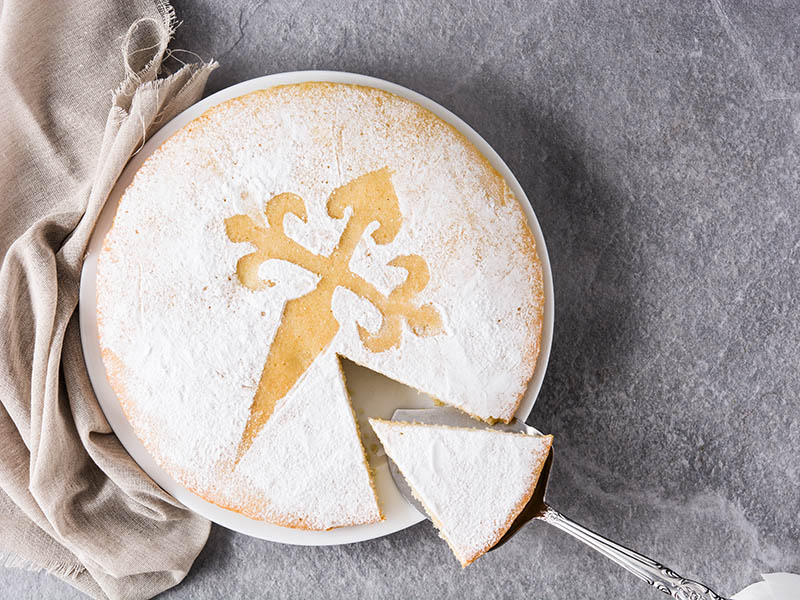
While Tarta means torta or cake or pie in Spanish, Santiago literally means Saint James, which indicates the cross imprint on top of the cake. It’s also a historical dessert since its first traces were in the 16th century.
The first printed recipe for this signature Spanish dessert was around 1983, and the icing sugar with Cross of Saint James garnish appeared in 1924. Nowadays, many bakeries in Galicia still use those centuries-old recipes, comprising egg, ground almond, and sugar.
The standard quality ones contain at least one-third of almonds. The flavorings vary, from sweet white wine, brandy to lemon zest or grape marc. Tarta de Santiago can exclude the base, but the baker often will form it with puff pastry or shortcrust pastry.
Eating In One Of The Most Beautiful Places In The World!
Many know of Galicia for its beautiful scenery with a long coastline, many fountains, and wonderful forests. Thus, there’s nothing more satisfying than eating astonishing traditional dishes while watching the incredible landscape.
Feel free to let me know your thoughts in the comment sections! I’m extremely curious about what dish has caught your attention or your experiences of traveling in the Galicia region. Moreover, don’t forget to share this “delicious” information with your beloved ones!
